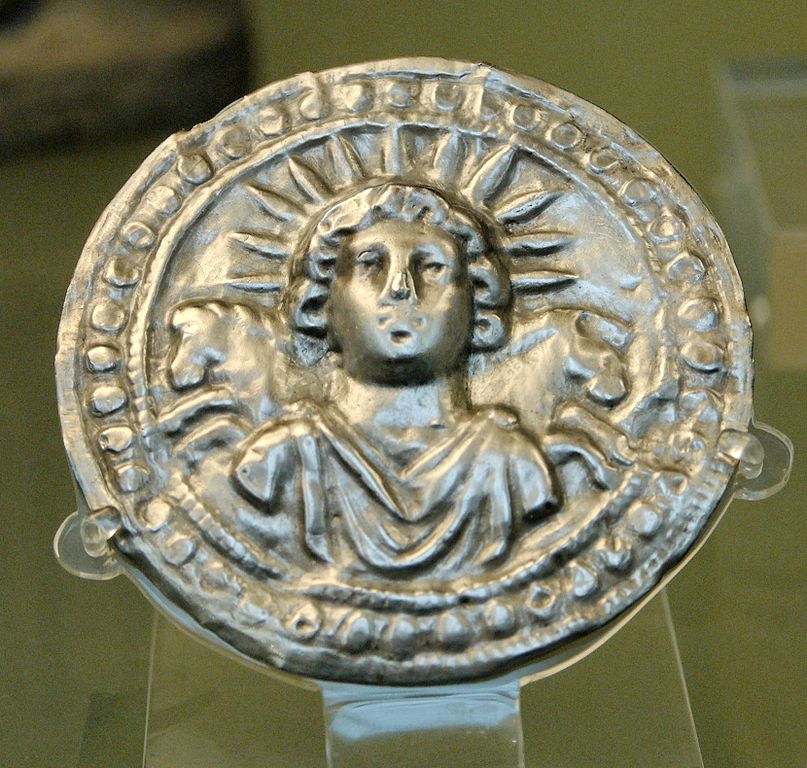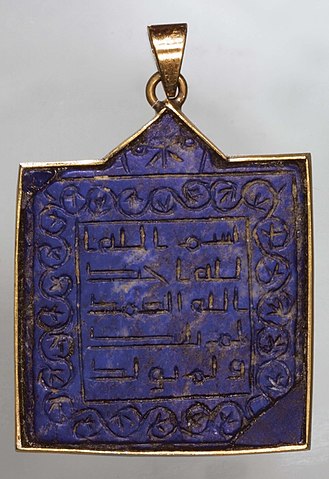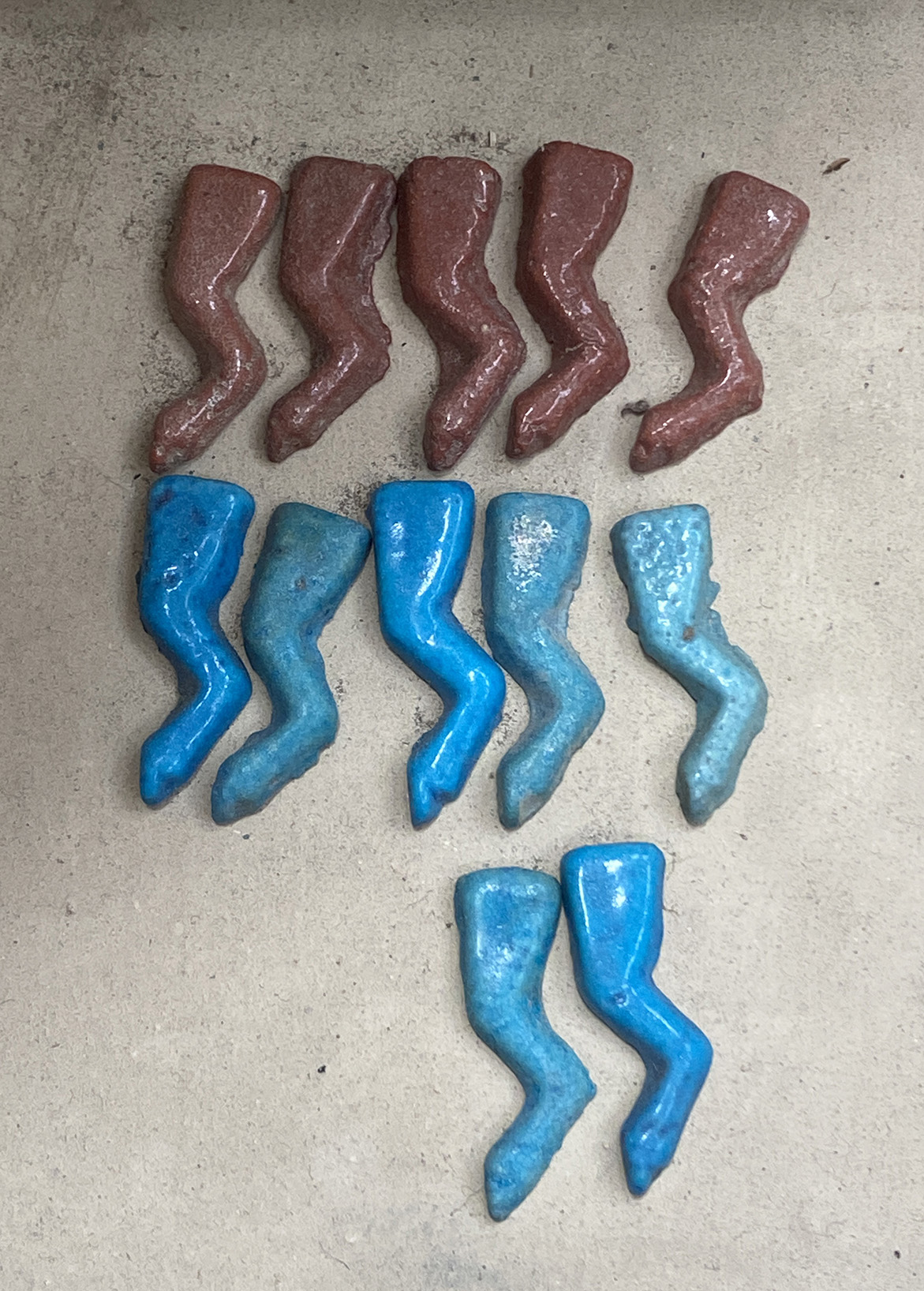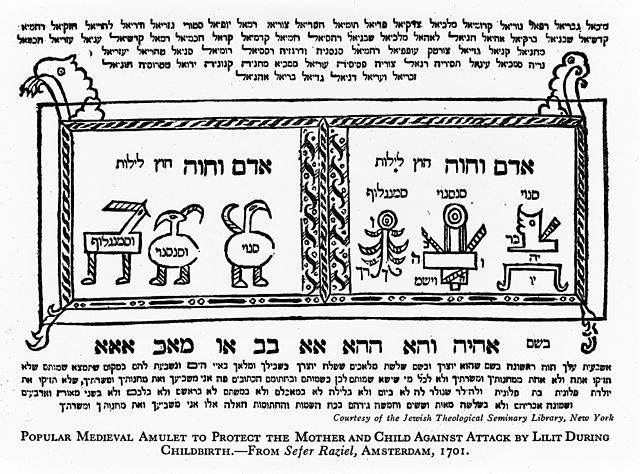Amulet
An amulet is any object that is generally worn for protection and made from a durable material. Anything can function as an amulet; items commonly so used include statues, coins, drawings, plant parts, animal parts, and written words. Talisman and amulets have interchangeable meanings. Both amulets and talismans can be applied to paper examples as well.
Amulets are sometimes confused with pendants, small aesthetic objects that hang from necklaces.
Name
The word "amulet" comes from the Latin word amuletum, which Pliny's Natural History describes as "an object that protects a person from trouble".
Ancient Egypt

The use of amulets (meket) was widespread among both living and dead ancient Egyptians. They were used for protection and as a means of "...reaffirming the fundamental fairness of the universe." The oldest amulets found are from the predynastic Badarian Period, and they persisted all the way through to Roman times.
Amulets depicted specific symbols, among the most common are the ankh and the Eye of Horus, which represented the new eye given to Horus by the god Thoth as a replacement for his old eye, which had been destroyed during a battle with Horus's uncle Set. Amulets were often made to represent gods, animals or hieroglyphs. Set himself was the focus of the Foreleg of Set amulet often found wrapped between the bandages of mummies.
The most common material for such amulets was a kind of ceramic known as Egyptian faience or tjehenet, but amulets were also made of stone, metal, bone, wood and gold.
Ancient Rome
Amulets are usually outside of the normal sphere of Roman religious experience, though associations between certain gemstones and gods has been suggested. For example, Jupiter is represented on milky chalcedony, Sol on heliotrope, Mars on red jasper, Ceres on green jasper, and Bacchus on amethyst.
Amulets were worn to imbue the wearer with the associated powers of the gods rather than for any reasons of piety. The intrinsic power of the amulet is also evident from others bearing inscriptions, such as vterfexix (utere fexix) or "good luck to the user."
Amulet boxes could also be used, such as the example from part of the Thetford treasure, Norfolk, UK, where a gold box intended for suspension around the neck was found to contain sulphur for its apotropaic (evil-repelling) qualities. Children wore bullas and lunulas, and could be protected by amulet-chains known as Crepundia.
Jewish traditions
Metal amulets in the form of flat sheets made of silver, gold, copper, and lead were also popular in Late Antiquity in Palestine and Syria as well as their adjacent countries (Mesopotamia, Asia Minor, and Iran).
Due to the proscription of idols and other graven images in Judaism, Jewish amulets emphasize text and names incised with a needle with manifold incantation formulas, citations, and references to the name of God (Tetragrammaton). Most of them are composed in various kinds of Jewish Aramaic and Hebrew, but there exist also sometimes combinations with Greek. Counter-examples, however, include the Hamsa (an outline of a human hand) and the Seal of Solomon.
Regional traditions surrounding the birth of children often included amulets to ward off the Devil, the evil eye, or demons such as Lilith.
Christian tradition
The crucifix, and the associated sign of the cross, is one of the key sacramentals used by Christians to ward off evil since the time of the Early Church Fathers; as such, many Christians wear a cross necklace.
Several Christian saints have written about the power of holy water as a force that repels evil. Lay Catholics are not permitted to perform solemn exorcisms, but they can use holy water, blessed salt, and other sacramentals, such as the Saint Benedict medal or the crucifix, for warding off evil.
Early Egyptian Christians made textual amulets with scriptural incipits, especially the opening words of the Gospels, the Lord's Prayer and Psalm 91. These amulets have survived from late antiquity (c. 300–700 C.E.), mostly from Egypt. They were written in Greek and Coptic on strips of papyrus, parchment and other materials in order to cure bodily illnesses and/or to protect individuals from demons.
Amulets which derive their extraordinary properties and powers from magic are typically part of folk religion or paganism, whereas amulets or sacred objects of formalised mainstream religion as in Christianity are believed to have no power of their own without faith in Jesus and being blessed by a clergyman, and they supposedly will also not provide any preternatural benefit to the bearer who does not have an appropriate disposition.
Islam

There is a long cultural tradition of using amulets in Islam and in many Muslim-majority countries, tens of percent of the population use them. Some hadith condemn the wearing of talismans, and some Muslims (notably Salafis) believe that amulets and talismans are forbidden in Islam, and using them is an act of shirk (idolatry). Other hadith support the use of talismans with some Muslim denominations considering it 'permissible magic', usually under some conditions (for instance, that the wearer believes that the talisman only helps through God's will).
Astrological symbols were also used, especially in the Medieval period. These included symbols of the Zodiac, derived from Greek representations of constellations, and especially popular in the Middle East in the twelfth to the fourteenth centuries. Muslim artists also developed personifications of the planets, based on their astrological traits, and of a hypothetical invisible planet named Al Tinnin or Jauzahr. It was believed that objects decorated with these astrological signs developed talismanic power to protect.
Among the semi-precious materials, carnelian is often favoured because it was considered as the stone of Muhammad, who was said to have worn a carnelian seal set in silver on the little finger of his right hand.

